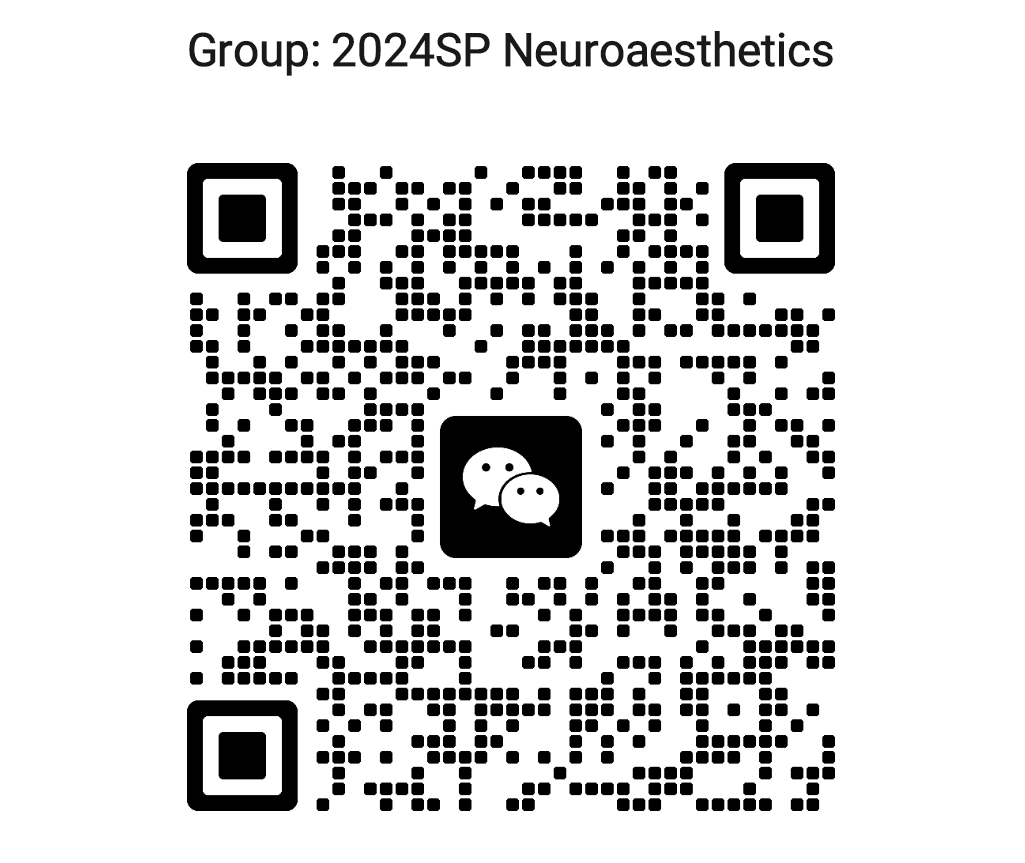BIMSA >
Theoretical Foundations of Neuroaesthetics Applied to Scientific Representations via Generative AI Models
Theoretical Foundations of Neuroaesthetics Applied to Scientific Representations via Generative AI Models
This semester consists of 24 lectures, encompassing the foundational understanding of
neuroaesthetics, with the aim of enhancing students' visual communication proficiencies in the context
of scientific presentations.
Neuroaesthetics is a field that explores how the brain processes and responds to aesthetic experiences,
including visual stimuli like art and design principles used in presentation to an audience. Applying
principles from neuroaesthetics to your scientific presentations can enhance their effectiveness and
engagement. Neuroaesthetics elucidates the neural mechanisms underpinning responses to visual
stimuli, thus empowering students to adeptly construct visually engaging presentations capable of
effectively conveying intricate scientific concepts.
neuroaesthetics, with the aim of enhancing students' visual communication proficiencies in the context
of scientific presentations.
Neuroaesthetics is a field that explores how the brain processes and responds to aesthetic experiences,
including visual stimuli like art and design principles used in presentation to an audience. Applying
principles from neuroaesthetics to your scientific presentations can enhance their effectiveness and
engagement. Neuroaesthetics elucidates the neural mechanisms underpinning responses to visual
stimuli, thus empowering students to adeptly construct visually engaging presentations capable of
effectively conveying intricate scientific concepts.

Lecturer
Ainel Lerner
Date
11th March ~ 28th May, 2024
Location
| Weekday | Time | Venue | Online | ID | Password |
|---|---|---|---|---|---|
| Monday,Tuesday | 10:20 - 12:05 | A3-2a-302 | ZOOM 14 | 712 322 9571 | BIMSA |
Syllabus
These serie of lectures encompasses the following topics:
- Defining neuroaesthetics and elucidating its interdisciplinary character.
- Neurological Mechanisms of Aesthetics: brain regions implicated in aesthetic processing,
neurotransmitter involvement, and the neural pathways connected to aesthetic responses.
- Neuroaesthetic Studies: Critical examination of seminal studies in neuroaesthetics, including but not
limited to Gestalt theory, the "neural beauty" concept as elucidated by Prof. Ramachandran, and the
"aesthetic triad" comprising color, form, and emotional evaluation, as advanced by Prof. Zeki. Special
emphasis is placed on the integration of neuroaesthetic principles into AI generative model prompts to
enhance scientific presentations.
- Embodiment, and Frames of Reference: In-depth exploration of virtual reality paradigms.
- Overview of Software and AI Generative Models: A comprehensive overview of pertinent software
tools and AI generative models.
- Basics of Prompt Engineering: Foundational principles of prompt engineering
- Defining neuroaesthetics and elucidating its interdisciplinary character.
- Neurological Mechanisms of Aesthetics: brain regions implicated in aesthetic processing,
neurotransmitter involvement, and the neural pathways connected to aesthetic responses.
- Neuroaesthetic Studies: Critical examination of seminal studies in neuroaesthetics, including but not
limited to Gestalt theory, the "neural beauty" concept as elucidated by Prof. Ramachandran, and the
"aesthetic triad" comprising color, form, and emotional evaluation, as advanced by Prof. Zeki. Special
emphasis is placed on the integration of neuroaesthetic principles into AI generative model prompts to
enhance scientific presentations.
- Embodiment, and Frames of Reference: In-depth exploration of virtual reality paradigms.
- Overview of Software and AI Generative Models: A comprehensive overview of pertinent software
tools and AI generative models.
- Basics of Prompt Engineering: Foundational principles of prompt engineering
Video Public
Yes
Notes Public
Yes
Language
English
Lecturer Intro
France-Ainel Lerner obtained her Ph.D. in Art and Science from the University of Liège, under the supervision of Steven Laureys and Mylène Botbol-Baum. She was a postdoctoral fellow at the Weizmann Institute of Science and joined BIMSA as an assistant professor in 2023. Her research spans affective neuroscience, digital interactive communication, and extended reality technologies. Her recent work focuses on critical states of consciousness, virtual embodiment, and interactive visual scientific representations.
In addition to her academic career, France-Ainel is an accomplished artist, with exhibitions spanning Europe and the Middle East. Her works explore the complex relationships between consciousness, time, and space, often through the lens of her scientific inquiries.
In addition to her academic career, France-Ainel is an accomplished artist, with exhibitions spanning Europe and the Middle East. Her works explore the complex relationships between consciousness, time, and space, often through the lens of her scientific inquiries.





